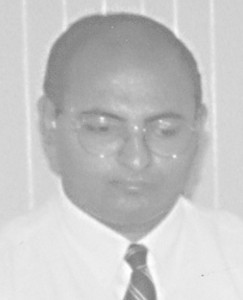Privatisation proceeds totalled $24 billion between 1994 and this year, last week’s seminar put on by the government was told.

In response to a question from the floor at the seminar on Guyana’s privatization and taxation practices at Le Meridien Pegasus about why the government was not depositing all the funds into the Consolidated Fund, Head of the Privatisation Unit, Winston Brassington said that since 2002 not much money was being received by NICIL since there has not been many transactions. NICIL is the holding company for the privatization proceeds.
In his earlier presentation at the seminar Brassington noted that divestment proceeds from privatization and real estate transactions from 1994 to 2008 amounted to $24 billion. All the money, he said, did not go to the government or to the vendor in this case. In cases like the Linmine (Linden Mining Enterprise), GEC (Guyana Electricity Corporation) and GAC (Guyana Airways Corporation), he said that the proceeds of the privatization deals were put back into the entity as a form of investment.
Of a total of 26 privatisation transactions, four were advertised; of the remaining 22, three were negotiated and finalised following inadequate responses to advertisements, including Linmine and Aroaima Mining Company/Bermine.
Of the 46 real estate transactions, 36 were property sale transactions and 10 were lease transactions. Of the 36 sale transactions, eight were not advertised (of which six were sold to the respective occupants), one was sold to an adjacent owner, and one was sold to facilitate the headquarters of the New Building Society.
The eight transactions conducted at the valuation price and not advertised were approved by the Privatisation Board and Cabinet. Of the ten lease transactions seven were advertised. Of the three not advertised two were based on investment/employment proposals in bauxite communities and one, the Guyana China Sanata Textiles company, was based on a government-to-government arrangement. Overall, he said, privatization had been done in a transparent and open manner. “The modes employed emphasized the continuation of the business in most cases. Considerable attention was given to optimizing value, investment and employment. Difficult businesses which could easily have been liquidated have been privatised saving thousands of jobs.”
Brassington said that when the Guyana China Sanata Textiles wound up its business the assets were vested in NICIL. Similarly when the John Fernandes land was sold all the proceeds were vested in NICIL.
The board of directors at NICIL, which looks at all the properties it has under its jurisdiction, expenses to be covered and assets to be disposed off, would determine how they are dealt with. Increasingly, he said, some of the assets are sold and some rehabilitated. In 2006, he said, upkeep and security of the Sanata Textiles complex cost NICIL $20 million in rates and taxes and security.
He recalled too that following a court judgment against Sanata and the defunct GUYNEC in which they were required to pay the Georgetown Municipality $128 million, it was NICIL that entered into an agreement with City Hall and discharged their outstanding obligations.
In relation to the submission of accounts to the Auditor General’s Office, he said that NICIL dutifully submits its accounts to the AG’s Office but the office has been somewhat slow in returning the audited accounts.
In response to why the government over the past seven years had only granted three tax holidays in a bid to attract investment, Chief Executive Officer of the Guyana Office for Investment (Go-Invest), Geoffrey Da Silva’s immediate response was “damn if you do and damn if you don’t.”
He added that tax holidays are basically not an international best practice for attracting investments. “Tax holidays are never used as a means of attracting investment,” he said, adding that there are accusations that the government has been giving tax holidays to a whole lot of people.
While it has never been used as a major way to encourage investment, he said that a country and a government must have the option to grant it. The Guyana government, he said, has never seen it as a means of attracting a foreign or major investment.





